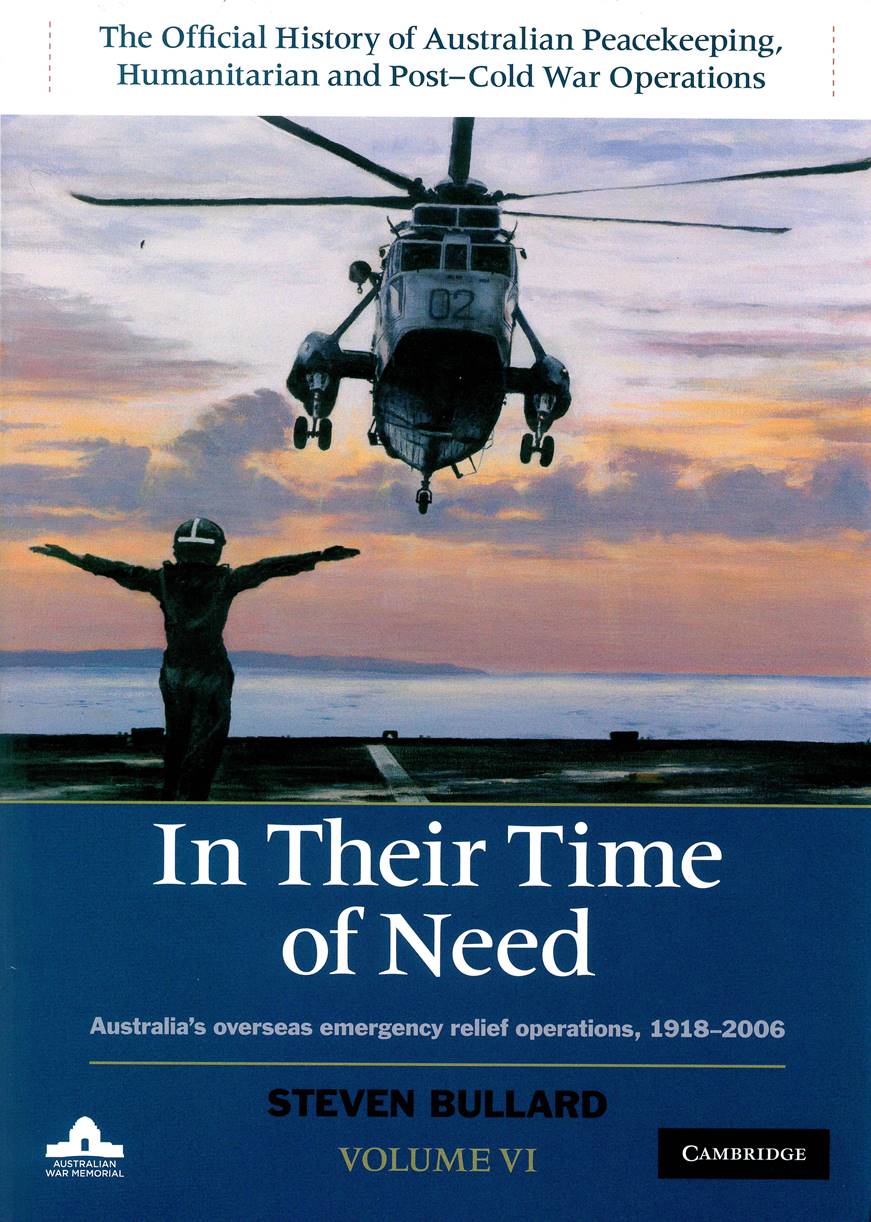In Their Time of Need documents this century-long commitment, focusing on the overseas deployment of defence and other personnel and equipment for broadly humanitarian goals, generally in response to a call for assistance after a natural disaster or other non-conflict related emergency. This volume is the sixth and second last instalment of The Official History of Australian Peacekeeping, Humanitarian and Post-Cold War Operations series.

RRP $179.00 (hardback)
Since 1918, Australia’s defence forces have been used by successive governments as the first point of call in responding to overseas disasters, including to deliver and distribute food and medical supplies, provide emergency medical services, transport the injured and those made homeless, and begin the arduous task of clearing debris and restoring essential services.
Beginning with the 1917-18 influenza epidemic that ravaged the Pacific and culminating with the 2005 Pakistan earthquake, this book covers Australia’s response to some of the most catastrophic natural events of the 20th century. The military’s involvement in overseas emergency management is focused primarily on the period immediately after disaster strikes: transporting relief supplies, providing medical assistance, restoring basic services and communications, and other logistical support.
Bullard explains in the preface that the approach used in the series was to “tell the story of the respective missions at three levels: the strategic level, in which we have concentrated on the government’s decision-making process; the operational level, in which we sought to explain how the ADF and other agencies planned and executed their tasks; and the tactical and personal level, in which we try to describe what the participants actually did in the field.” The end result of the approach, at least in this volume, is a very comprehensive and coherent account of Australia’s contribution and involvement in these multinational operations.
In Their Time of Need is comprehensive and richly detailed, as Steven Bullard weaves together official government records and archival images with the personal narratives and photographs of those who served. Bullard’s research and analysis is first class and he cites not only written records but also employs material from interviews with a significant number of the decision-makers and participants. Together, they form a very readable account of events.
In Their Time of Need has 500 pages in the main body, a full list of abbreviations, a series of useful appendices including a list of overseas disaster relief missions, and a comprehensive index. There are 24 coloured maps and 54 photos. Unsurprisingly, the bibliography is extensive and a valuable tool for future researchers in itself.
Bullard is a graduate of the Australian National University, a senior historian at the Australian War Memorial (AWM) and a Visiting Fellow at the ANU’s Strategic and Defence Studies Centre. At the AWM he has been a senior research officer with the Australia-Japan Research Project, and served as the project’s manager from 2002 to 2007. His research interests include the experience of the Japanese in World War II, Japanese prisoners of war in Australia, war crimes trials of the Japanese conducted after the war, and Australian peacekeeping operations. Bullard was appointed a senior historian and was commissioned to write this volume in 2007. In 2016, Bullard was appointed to write Volume 3 on Afghanistan as part of The Official History of Australian Operations in Iraq and Afghanistan, and Australian Peacekeeping Operations in East Timor.
This volume, however, does not describe disaster relief operations in Australia, search and rescue operations, or operations that can be considered humanitarian in nature but not triggered by a natural disaster.
The final volume in the series by Peter Londey will be published in 2018 and covers peacekeeping missions that began between 1947 and 1987, including Indonesia, Kashmir, the Middle East, the Congo, Cyprus, and Rhodesia/Zimbabwe.
In the conclusion, Bullard examines how these missions fit into the broader canvas of Australian history and identifies the continuities and discontinuities with Australian military tradition. In his closing paragraph, he states “…Australia had the capacity, the willingness, and the generosity in sufficient measure to send its military personnel to help after tragedy struck the international community. Subsequent events have shown that this attitude endures and that Australia will continue to assist its neighbours in their time of need.”
This volume is an authoritative and compelling history of Australia’s efforts to help others in times of need and Bullard has made a valuable contribution to the record of Australia’s military history. I commend the book to those who seek a better understanding the context, complexities and challenges of Australia’s overseas military operations.
Contact Marcus Fielding about this article.






